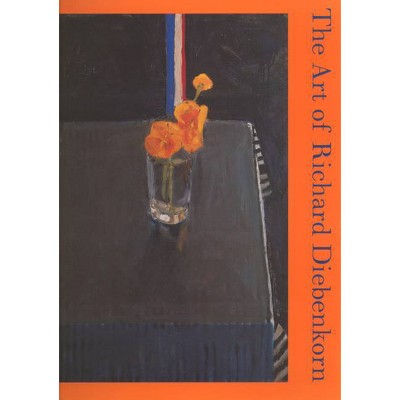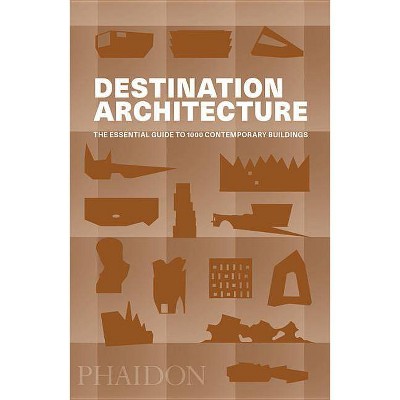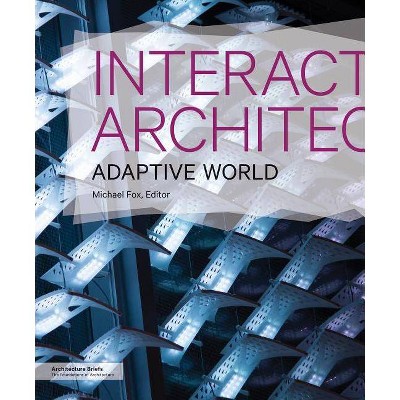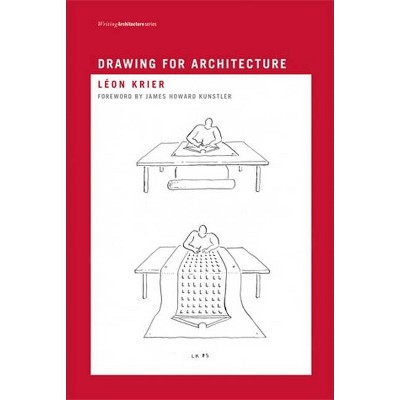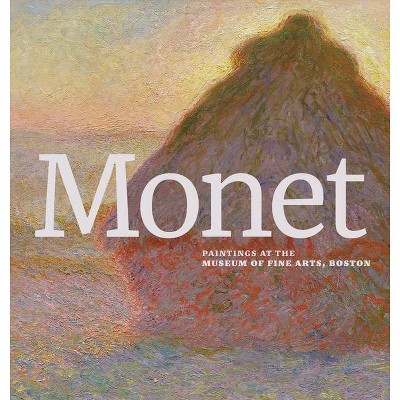Borderwall as Architecture - (Ahmanson-Murphy Fine Arts Imprint) by Ronald Rael (Paperback)
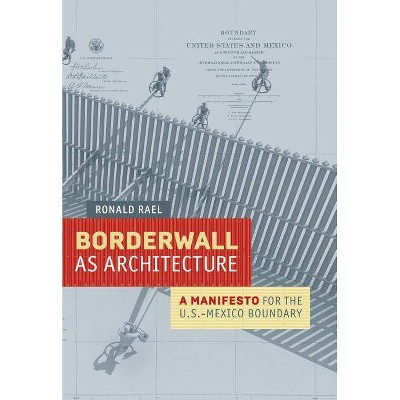
Similar Products
Products of same category from the store
AllProduct info
<p/><br></br><p><b> About the Book </b></p></br></br>"Borderwall as Architecture is an account of the barrier that divides the United States of America from the United States of Mexico. It is an historical account, a protest against the wall, and a projection about its future through a series of propositions that suggest that the wall in its conception is an opportunity for economic and social development along the border. The book makes this case by taking readers on a conceptual journey along a wall that cuts through a "third nation"-- the Divided States of America. Along this journey the transformative effects of the wall on people, animals and the natural and built landscape are exposed and called into question through the story of people, who on both sides of the border, transform the wall--giving it new meaning by challenging its very existence in remarkably creative ways. Coupled with these real-life accounts are unsolicited counter proposals for the wall, that re-imagine, hyperbolize, or question the wall and its construction, cost, performance and its meaning. These proposals work from the proposition that despite the intended use of the wall to keep people out and away, the wall is instead an attractor, engaging both sides in a common dialogue."--Provided by publisher.<p/><br></br><p><b> Book Synopsis </b></p></br></br><b>"A protest against the wall and a forecast about its future."--Allison Arieff, <i>The New York Times</i></b> <p/> "Rael's courageous mixture of subversion and compromise is not going to hide the affront that the border represents to those who live south of it."--<i>London Review of Books</i> <p/> "<i>Borderwall as Architecture</i> explores how architects can undermine the wall not just structurally, but conceptually. Today, the wall symbolizes xenophobia and fear. Designs that promote social, economic, and ecological development on both sides of the border could rewrite that narrative. In the past, groups have gathered on both sides of the wall to hold yoga meetups and stage horse races. Rael draws inspiration from these and other examples to highlight opportunities for subversion and change."--<i>Wired</i> <p/> "Part historical account, part theoretical appraisal, and part design manifesto, <i>Borderwall as Architecture</i> is reminiscent of Rem Koolhaas' <i>Delirious New York</i> in its sweeping assessment of both the sociocultural peculiarities and outlandish possibilities represented by a prominent structural element."--<i>Architect Magazine</i> <p/> "<i>Borderwall As Architecture</i> goes into keen scholarly detail on the walls at the US-Mexico border...Rael offers many such concepts in the book, which often have a whimsy about them that reminds me of Italo Calvino's <i>Invisible Cities</i>." <br> --<i>New Scientist</i> <p/> "[Rael's] imagination is audacious, and he smartly frames his "grand tour" of the border as a procession of vignettes that shift easily between history, architectural what-ifs and what you might call postcards from the front."-- <i>San Francisco Chronicle</i> <p/> "...in raising questions that not many others are asking about the relationship between two countries that share 2,000 miles of border, his book serves an important purpose."--<i>The Daily Beast</i> <p/><i>Borderwall as Architecture</i> is an artistic and intellectual hand grenade of a book, and a timely re-examination of what the physical barrier that divides the United States of America from the United Mexican States is and could be. It is both a protest against the wall and a projection about its future. Through a series of propositions suggesting that the nearly seven hundred miles of wall is an opportunity for economic and social development along the border that encourages its conceptual and physical dismantling, the book takes readers on a journey along a wall that cuts through a "third nation"--the Divided States of America. On the way the transformative effects of the wall on people, animals, and the natural and built landscape are exposed and interrogated through the story of people who, on both sides of the border, transform the wall, challenging its existence in remarkably creative ways. Coupled with these real-life accounts are counterproposals for the wall, created by Rael's studio, that reimagine, hyperbolize, or question the wall and its construction, cost, performance, and meaning. Rael proposes that despite the intended use of the wall, which is to keep people out and away, the wall is instead an attractor, engaging both sides in a common dialogue. Included is a collection of reflections on the wall and its consequences by leading experts Michael Dear, Norma Iglesias-Prieto, Marcello Di Cintio, and Teddy Cruz.<p/><br></br><p><b> From the Back Cover </b></p></br></br>"A fascinating book, astonishing and magical: a realm where the absurdity of a wall is transformed from obstructive and negative to an affirmation of shared humanity."--Judith Torrea, journalist and author based in Ciudad Juárez, México <p/> "Timely and provocative, <i>Borderwall as Architecture</i> is an eloquent appeal to reconsider the principles and prejudices of nationalism within the context of the built environment."--Jonathon Keats, experimental philosopher and author of <i>You Belong to the Universe: Buckminster Fuller and the Future</i> <p/> "No longer sovereign limits of exchange, borders are at once indexes of national as well as individual identities. <i>Borderwall as Architecture</i> interrogates how the the securitization of the United States' southernmost limits radically define new landscapes of transaction that can also be visualized as a tool of violence. Among Ronald Rael's elegant ironies seen across anticipatory yet moving drawings and projects, the Mexico-US border fence/wall registers a figurative logic in which seemingly banal aspects of porosity, transparency, and locality also confront architecture's and our own roles in two nations' un-becoming."--Sean Anderson, Curator, Architecture and Design, MOMA<p/><br></br><p><b> Review Quotes </b></p></br></br><br>"...a timely re-examination of what the physical barrier that divides the United States of America from the United Mexican States is and could be...alongside the architectural brutality and social displacement that almost automatically accompany such borders, Ronald Rael and his contributors also explore the ways in which highlighting the border can be transformed into new opportunities."-- "Times Higher Education"<br><br>"...in raising questions that not many others are asking about the relationship between two countries that share 2,000 miles of border, his book serves an important purpose."-- "The Daily Beast"<br><br>"...the proposals ...attempting to transform the boundary into something more than just an obstruction, are provocative and inventive."-- "Architectural Record"<br><br>"<i>Borderwall as Architecture</i> explores how architects can undermine the wall not just structurally, but conceptually. Today, the wall symbolizes xenophobia and fear. Designs that promote social, economic, and ecological development on both sides of the border could rewrite that narrative. In the past, groups have gathered on both sides of the wall to hold yoga meetups and stage horse races. Rael draws inspiration from these and other examples to highlight opportunities for subversion and change."-- "Wired"<br><br>"[A} small book with big ideas...Rael shows that alternative proposals depicted through architecture (drawings, models, renderings) are also a legitimate form of protest."-- "A Daily Dose of Architecture"<br><br>"Rael presents the wall not as a simple securitized object but as a critical facet of life cutting through communities and the desert-- [for example] ..."House Divided" presents a mode for architecture to both illustrate the recursive logic of the geometric barrier and frame it within a domestic typology that can be read in all of its complex relations."-- "The Avery Review"<br><br>"Rael sees endless opportunities for creative defiance as he exposes the wall's xenophobic horror stories, absurdities and ironies by imagining design as both an undermining and reparative measure... [his proposals] force us to re-examine the feasibility of constructing "a big beautiful wall" around fortress America by underscoring that borders are innate zones of connectivity as much as division." -- "New York Journal of Books"<br><br>"Rael's courageous mixture of subversion and compromise is not going to hide the affront that the border represents to those who live south of it."-- "London Review of Books"<br><br>"This is a work that harks back to the days of Buckminster Fuller and Marshall McLuhan -- especially the latter."-- "Diplomat & International Canada"<br><br>"While border walls and separation now seem inevitable, Rael's subversive designs seem to indicate a way forward: They allow us to cope with the current moment by preparing for a less segregated future."-- "World Policy Journal"<br><br><p>"<i>Borderwall As Architecture</i> goes into keen scholarly detail on the walls at the US-Mexico border...Rael offers many such concepts in the book, which often have a whimsy about them that reminds me of Italo Calvino's <i>Invisible Cities</i>."</p>--Bruce Sterling, "New Scientist"<br><br>"[Rael's] imagination is audacious, and he smartly frames his "grand tour" of the border as a procession of vignettes that shift easily between history, architectural what-ifs and what you might call postcards from the front."--John King, "San Francisco Chronicle"<br><br>"A protest against the wall and a forecast about its future."--Allison Arieff, "The New York Times"<br><br>"Part historical account, part theoretical appraisal, and part design manifesto, <i>Borderwall as Architecture</i> is reminiscent of Rem Koolhaas' <i>Delirious New York</i> in its sweeping assessment of both the sociocultural peculiarities and outlandish possibilities represented by a prominent structural element."--Blaine Brownell, "Architect Magazine"<br><p/><br></br><p><b> About the Author </b></p></br></br><b>Ronald Rael</b> is Associate Professor in the departments of Architecture and Art Practice at the University of California, Berkeley. He is the author of <i>Earth Architecture</i>, a history of building with earth in the modern era that exemplifies new, creative uses of the oldest building material on the planet. The Museum of Modern Art and the Cooper Hewitt Smithsonian Design Museum have recognized his work, and in 2014 his creative practice, Rael San Fratello, was named an Emerging Voice by the Architectural League of New York. <p/>
Price History
Cheapest price in the interval: 22.49 on October 22, 2021
Most expensive price in the interval: 22.49 on December 20, 2021
Price Archive shows prices from various stores, lets you see history and find the cheapest. There is no actual sale on the website. For all support, inquiry and suggestion messages communication@pricearchive.us
